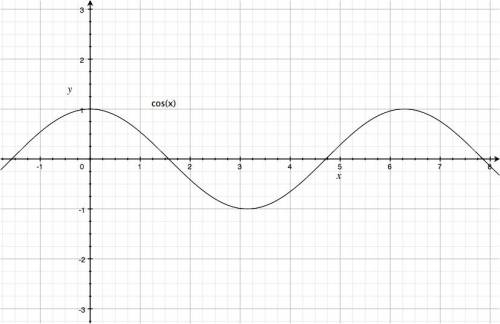The page you are reading is part of a draft (v2.0) of the "No bullshit guide to math and physics."
The text has since gone through many edits and is now available in print and electronic format. The current edition of the book is v4.0, which is a substantial improvement in terms of content and language (I hired a professional editor) from the draft version.
I'm leaving the old wiki content up for the time being, but I highly engourage you to check out the finished book. You can check out an extended preview here (PDF, 106 pages, 5MB).
Cosine
Definition
\[ f(x)=\cos(x). \]
Graph
Cos starts off from $\cos(0)=1$ and then drops down to cross the $x$ axis at $x=\frac{\pi}{2}$. Cos then continues until it reaches its minimum value at $x=\pi$. The function then comes back up, crosses the $x$ axis again at $x=\frac{3\pi}{2}$, and goes back up to its maximum value at $x=2\pi$.
Properties
- The $\cos$ function is even, which means it doesn't care
about the sign of the input:
\[
\cos(-x) = \cos(x).
\]
* The cosine function is a shifted version of the sine function
\[
\cos(x) = \sin(x+\frac{\pi}{2}).
\]

